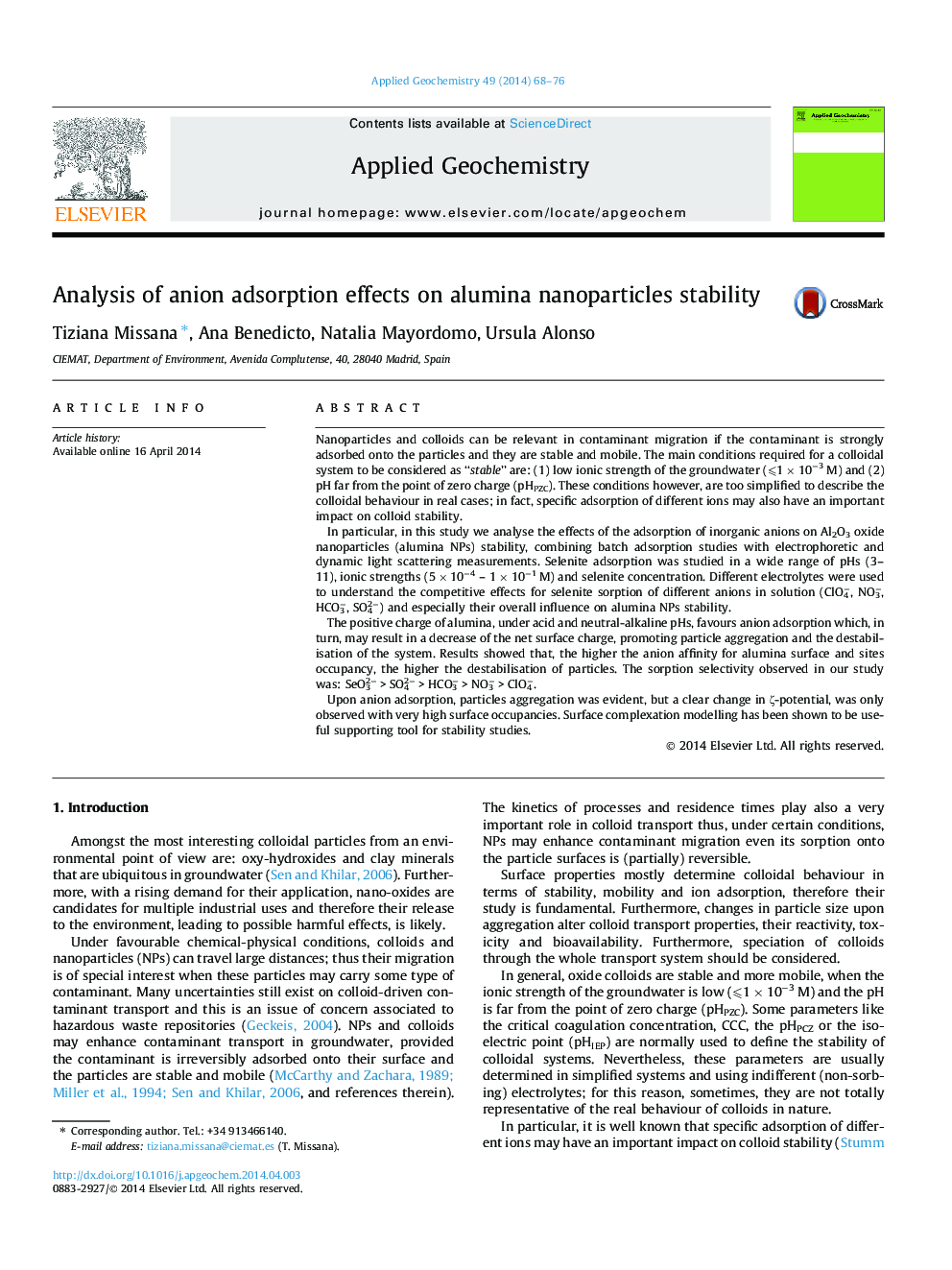| کد مقاله | کد نشریه | سال انتشار | مقاله انگلیسی | نسخه تمام متن |
|---|---|---|---|---|
| 4435762 | 1620242 | 2014 | 9 صفحه PDF | دانلود رایگان |
• Adsorption of inorganic anions onto nanoparticles affects their stability.
• The aggregation state upon anion adsorption depends on particle surface coverage.
• Changes in ζ-potential are only visible with a very high surface coverage.
• Groundwater anions, obviated in stability studies, must be taken into account.
• Surface complexation modelling is a useful supporting tool for stability studies.
Nanoparticles and colloids can be relevant in contaminant migration if the contaminant is strongly adsorbed onto the particles and they are stable and mobile. The main conditions required for a colloidal system to be considered as “stable” are: (1) low ionic strength of the groundwater (⩽1 × 10−3 M) and (2) pH far from the point of zero charge (pHPZC). These conditions however, are too simplified to describe the colloidal behaviour in real cases; in fact, specific adsorption of different ions may also have an important impact on colloid stability.In particular, in this study we analyse the effects of the adsorption of inorganic anions on Al2O3 oxide nanoparticles (alumina NPs) stability, combining batch adsorption studies with electrophoretic and dynamic light scattering measurements. Selenite adsorption was studied in a wide range of pHs (3–11), ionic strengths (5 × 10−4 – 1 × 10−1 M) and selenite concentration. Different electrolytes were used to understand the competitive effects for selenite sorption of different anions in solution (ClO4−, NO3−, HCO3−, SO42−) and especially their overall influence on alumina NPs stability.The positive charge of alumina, under acid and neutral-alkaline pHs, favours anion adsorption which, in turn, may result in a decrease of the net surface charge, promoting particle aggregation and the destabilisation of the system. Results showed that, the higher the anion affinity for alumina surface and sites occupancy, the higher the destabilisation of particles. The sorption selectivity observed in our study was: SeO32− > SO42− > HCO3− > NO3− > ClO4−.Upon anion adsorption, particles aggregation was evident, but a clear change in ζ-potential, was only observed with very high surface occupancies. Surface complexation modelling has been shown to be useful supporting tool for stability studies.
Journal: Applied Geochemistry - Volume 49, October 2014, Pages 68–76
